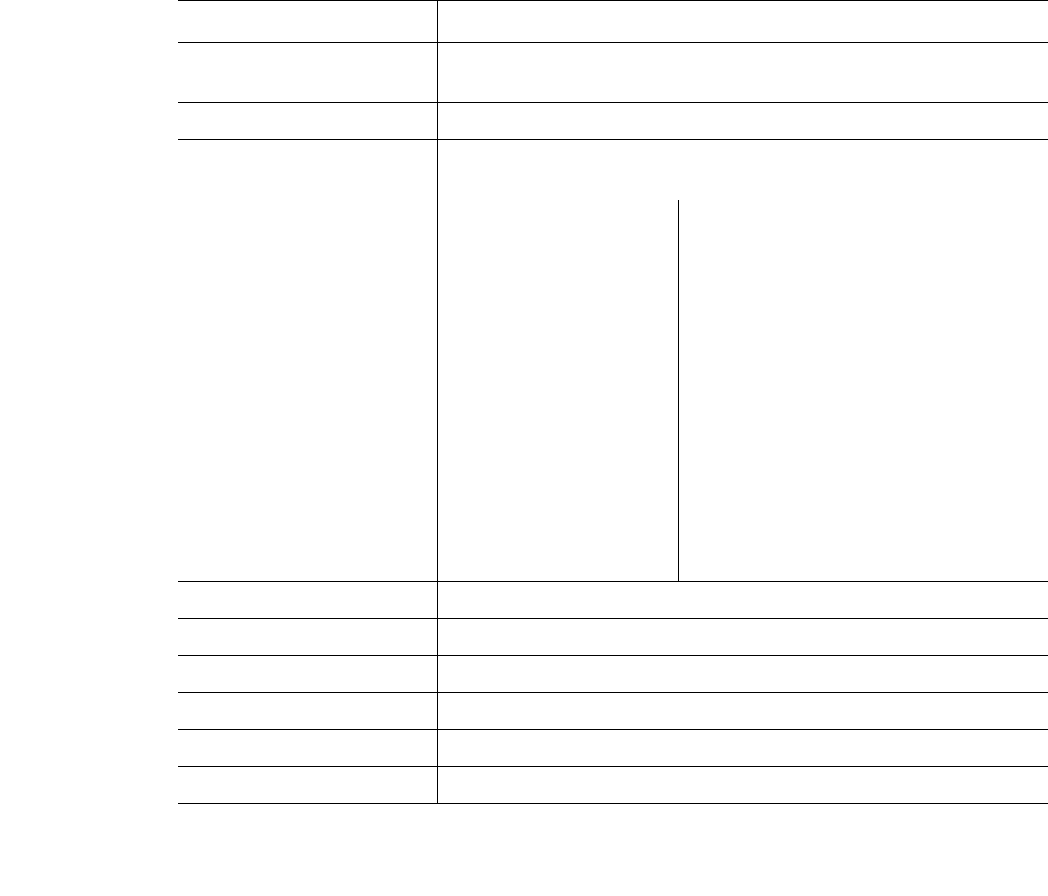Home Theater Server User Manual
Table Of Contents
- Contents
- About This Document
- Network Security
- TCP SYN attacks
- IP TCP syn-proxy
- Granular application of syn-proxy feature
- Syn-def
- No response to non-SYN first packet of a TCP flow
- Prioritizing management traffic
- Peak BP utilization with TRAP
- Transaction Rate Limit (TRL)
- Understanding transaction rate limit
- Configuring transaction rate limit
- Configuring the maximum number of rules
- Saving a TRL configuration
- Transaction rate limit command reference
- Global TRL
- TRL plus security ACL-ID
- security acl-id
- Transaction rate limit hold-down value
- Displaying TRL rules statistics
- Displaying TRL rules in a policy
- Displaying IP address with held down traffic
- Refusing new connections from a specified IP address
- HTTP TRL
- Overview of HTTP TRL
- Configuring HTTP TRL
- Displaying HTTP TRL
- Display all HTTP TRL policies
- Display HTTP TRL policy from index
- Display HTTP TRL policy client
- Display HTTP TRL policy starting from index
- Display HTTP TRL policy matching a regular expression
- Display HTTP TRL policy client index (MP)
- Display HTTP TRL policy client index (BP)
- Display HTTP TRL policy for all client entries (BP)
- Downloading an HTTP TRL policy through TFTP
- HTTP TRL policy commands
- Logging for DoS Attacks
- Maximum connections
- clear statistics dos-attack
- Maximum concurrent connection limit per client
- Firewall load balancing enhancements
- Syn-cookie threshhold trap
- Service port attack protection in hardware
- Traffic segmentation
- DNS attack protection
- Access Control List
- How ServerIron processes ACLs
- Default ACL action
- Types of IP ACLs
- ACL IDs and entries
- ACL entries and the Layer 4 CAM
- Configuring numbered and named ACLs
- Modifying ACLs
- Displaying a list of ACL entries
- Applying an ACLs to interfaces
- ACL logging
- Dropping all fragments that exactly match a flow-based ACL
- Enabling ACL filtering of fragmented packets
- Enabling hardware filtering for packets denied by flow-based ACLs
- Enabling strict TCP or UDP mode for flow-based ACLs
- ACLs and ICMP
- Using ACLs and NAT on the same interface (flow-based ACLs)
- Displaying ACL bindings
- Troubleshooting rule-based ACLs
- IPv6 Access Control Lists
- Network Address Translation
- Syn-Proxy and DoS Protection
- Understanding Syn-Proxy
- Configuring Syn-Proxy
- DDoS protection
- Configuring a security filter
- Configuring a Generic Rule
- Configuring a rule for common attack types
- Configuring a rule for ip-option attack types
- Configuring a rule for icmp-type options
- Configuring a rule for IPv6 ICMP types
- Configuring a rule for IPv6 ext header types
- Binding the filter to an interface
- Clearing DOS attack statistics
- Clearing all DDOS Filter & Attack Counters
- Logging for DoS attacks
- Displaying security filter statistics
- Address-sweep and port-scan logging
- Secure Socket Layer (SSL) Acceleration
- SSL overview
- SSL acceleration on the ServerIron ADX
- Configuring SSL on a ServerIron ADX
- Basic SSL profile configuration
- Advanced SSL profile configuration
- Configuring Real and Virtual Servers for SSL Termination and Proxy Mode
- Configuration Examples for SSL Termination and Proxy Modes
- SSL debug and troubleshooting commands
- Displaying socket information

130 ServerIron ADX Security Guide
53-1002440-03
DDoS protection
5
Configuring a rule for icmp-type options
ServerIron ADX has a set of built-in rules to manage icmp-type options. In this case, the
rule-icmp-type command is used with a <icmp-option-attack> variable specified in Table 15.
The following example configures the "filter3" security filter with a rule to drop packets that contain
the icmp-type echo-reply type.
ServerIronADX(config)# security filter filter3
ServerIronADX(config-sec-filter3)# rule icmp-type echo-reply drop
Syntax: [no] rule icmp-type <icmp-type> [log | no-log] [drop | no-drop]
The <icmp-type> variable can be one of the options described in Table 15
The log parameter directs the ServerIron ADX to drop traffic on the bound interface that matches
the rule specified by the configured <icmp-type>. The no-log parameter disables this function.
The drop parameter directs the ServerIron ADX to drop traffic on the bound interface that matches
the rule specified by the configured <icmp-type>. The no-drop parameter disables this function
TABLE 15 icmp option types and descriptions
ICMP Option Type Description
icmp-type addr-mask icmp type 17: addr-mask
timestamp-reply icmp type 14: timestamp-reply
icmp-type addr-mask-reply addr-mask-reply: icmp type 18: addr-mask-reply
icmp-type destination <type> icmp type 3: destination-unreachable.
The <type> variable is specified as one of the following values.
iadmin-prohibit
fragment-needed
host-admin-prohibited
host-precedence-violation
host-unknown
host-unreachable
host-unreachable-for-tos
net-admin-prohibited
net-unknown
net-unreachable
network-unreachable-for-tos
port-unreachable
precedence-cutoff
protocol-unreachable
route-fail
source-host-isolated
code 13: admin-prohibit
code 4: fragment-needed
code 10: destination-host-admin-prohibited
code 14: host-precedence-violation
code 7: destination-host-unknown
code 1: host-unreachable
code 12: host-unreachable-for-tos
code 9: destination-network-admin-prohibited
code 6: net-unknown
code 0: network-unreachable
code 11: network-unreachable-for-tos
code 3: port-unreachable
code 15: precedence-cutoff-in-effect
code 2: protocol-unreachable
code 5: route-fail
code 8: source-host-isolate
icmp-type echo-reply icmp type 0: echo-reply
icmp-type echo-request icmp type 8: echo-request
icmp-type info-reply icmp type 16: information-reply
icmp-type info-request icmp type 15: information-request
icmp-type param-problem icmp type 12: parameter-problem
icmp-type redirect icmp type 5: redirect










